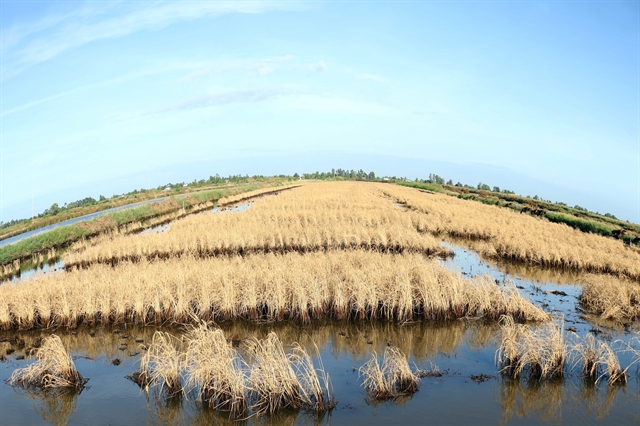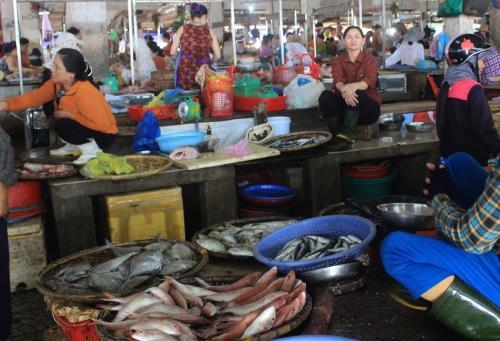 Environment
Environment

Months after the Formosa toxic spill, many types of seafood bred at fishing farms in the four central provinces affected by the incident or caught within 20 nautical miles of the shore are now deemed safe for consumption, a joint ministerial study has concluded.
 |
| Several types of seafood are still deemed unsafe, the health ministry said. – File Photo |
HÀ NỘI – Months after the Formosa toxic spill, many types of seafood bred at fishing farms in the four central provinces affected by the incident or caught within 20 nautical miles of the shore are now deemed safe for consumption, a joint ministerial study has concluded.
The seafood deemed safe includes tuna, mackerel, pompano, snapper, herring, and anchovy.
At a morning press conference in Hà Nội yesterday, leaders of the ministries of Health, Natural Resources and Environment, and Agriculture and Rural Development provided detailed information about sea environmental safety, seafood exploitation and seafood consumption in the four central provinces of Hà Tĩnh, Quảng Bình, Quảng Trị and Thừa Thiên-Huế.
Health Deputy Minister Nguyễn Thanh Long said that after the Ministry of Natural Resources and Environment announced the destruction of toxic fish inventories in four provinces on August 22, the health ministry immediately gathered leading experts on food safety, healthcare, nutrition and toxicology—as well as international experts—to study and assess the safety level of seafood at these localities.
The results of studies showed no presence of cyanide or phenol (toxic chemicals which, in combination with iron hydroxide, created a compound with a density heavier than seawater and caused the mass fish death) in samples of most types of seafood taken in the four central provinces and three other randomly-selected provinces.
Indicators of mercury, cadmium, lead, chromium, arsenic and iron in seafood samples of all seven provinces were within the allowed regulatory limit as well.
Additionally, marine products bred at fishing ponds in the four central provinces are also safe, the health ministry official said.
However, the health ministry warned several kinds of seafood, mostly bottom feeders, such as crab, shrimp, crayfish, snails, squid, rays, perch, octopus caught within 13.5 nautical miles are still unsafe for human consumption.
The ministry official said among 1,040 samples of seafood in four provinces, 132 samples were detected with phenol, including crab, shrimp, tôm tít (mantis shrimp, or stomatopod, is a type of marine crustacean of around 10cm in length), snails, squid, octopus, stone crabs.
To ensure the health of consumers, the Health Ministry asked people not to use seafood caught from waters within 20 nautical miles.
Additionally, it will increase information and guidance on unsafe seafood, as well as charge provincial health departments, relevant offices and local authorities with implementing necessary measures to ensure safe seafood consumption.
The health ministry will co-ordinate with the agriculture and rural development ministries to inspect periodically seafood caught off-shore and aquaculture at the four central provinces.
It also continues to take samples of seafood for testing.
The ministry proposed that authorities from the four central provinces continue carrying out seafood studies following the dispatch the ministry issued on August 26.
Only seafood batches that pass safety testing can be consumed, and all unsafe seafood must be destroyed.
At the meeting, the Ministry of Natural Resources and Environment said contamination levels at Hưng Nghiệp Formosa Hà Tĩnh Steel Co. Ltd dircharge sites—monitoring of natural cleaning mechanisms and pollutant concentration—decreased over time.
The quality of sea water measured at all automatic environmental monitoring stations met up to ministry regulations, including standards for beach safety, underwater sports, aquaculture and aquatic conservation.
Reef ecosystems, seagrass and fishery resources were all seriously affected by the Hưng Nghiệp Formosa Hà Tĩnh Steel Co. Ltd incident, but they’ve started to show positive signs of recovery.
The Ministry of Agriculture and Rural Development has inspected fishing vessels at ports and continues to take samples of seafood immediately after unloaded from ships with a frequency of once every two or three days.-- VNS









